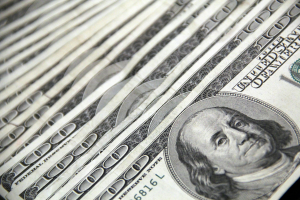Halfway through January, economic predictions for 2025 are beginning to trickle in. Analysts are meticulously studying the global markets, as they attempt to provide an accurate perspective on where the global economy is heading. Inflation and socio-political headwinds continue to grab the headlines.
The Organisation for Economic Co-operation and Development (OECD) expects the global economy to remain resilient despite the current challenges. Global GDP is projected to grow by 3.3% in 2025, up from 3.2% in 2024, and remain steady at 3.3% in 2026.
Inflation is expected to drop from 5.4% in 2024 to 3.8% in 2025 and decrease to 3.0% in 2026. This downtrend is supported by the still restrictive monetary policies of most governments worldwide. According to the OECD’s Economic Outlook, headline inflation has already approached central bank targets in almost half of the strong economies and nearly 60% of emerging market economies.
The Outlook also highlights that the pressure on labour markets has gradually eased, however, employment remains historically low. Consistent nominal wage gains and persisting disinflation have provided sufficient support for real household incomes.
Yet private consumption remains low in most nations, reflecting weak consumer confidence. Growth varies broadly across regions. US GDP, for example, is forecast to reach 2.8% in 2025 and slow to 2.4% in 2026.
Comparatively, lower interest rates and tight labour markets remain the major growth drivers of recovery in real household incomes and boosters of the economy. In line with this, Euro area GDP growth is expected to be 1.3% in 2025 and 1.5% in 2026, while Japan’s GDP growth is forecast to show a 1.5% expansion in 2025 and drop 0.6% in 2026.
Analysts envision continued economic sluggishness in China, with GDP growth at 4.7% in 2025 and 4.4% in 2026. Geopolitical tensions pose near-term risks while public debt ratios remain high and medium-term growth prospects are too weak to counter negative effects. Let’s take a closer look at the ‘economic map’.
Through the looking glass
China and India are looking for alternative oil supplies as they adjust to the new US sanctions on Russian oil producers. Condemning Russia’s unethical practices aimed at boosting its revenues from oil and energy imports, the US administration imposed a new set of sanctions against Russia.
This new punitive package against the world’s second-largest oil exporter targets the country’s largest oil producers, Gazprom Neft (SIBN.MM) and Surgutneftegaz, and 183 vessels part of a shadow fleet enabling Russia to sell its oil to global markets, skirting sanctions. Enacted by the Biden administration during its last days in office, these sanctions give Kyiv and the incoming Trump team leverage to potentially reach a peace deal in Ukraine.
According to data collected by tanker tracker Vortexa, the tankers subject to the US sanctions carried approximately 1.5 million barrels of crude oil daily in 2024, which covers roughly 1.4% of global oil demand.
On January 15, OPEC and IEA released their market oil reports, signalling market fear as potential supply disruptions loom. IEA also adjusted its demand growth forecast higher, as cold weather pervades the northern hemisphere. The agency’s estimates highlight that 2024 oil demand rose by 940k b/d, up by 90k b/d from its previous estimate. At the same time, oil demand is expected to expand by 1.05m b/d.
Meanwhile, OPEC decided to keep its demand growth for 2025 unchanged at 1.45m b/d YoY. Conversely, the group’s first projection for 2026 shows a 1.43m b/d YoY growth in demand. Supply growth estimates for non-OPEC+ members were left unchanged at 1.11m b/d for 2025, while supply is expected to grow by an equal amount in 2026.
In December 2024, OPEC oil production witnessed marginal growth, expanding by 26k b/d MoM to 26.74m b/d. Total OPEC+ production dropped by 14k b/d to 40.65m b/d, dragged by lower output from Kazakhstan.
According to US oil CFD pricing data from TibiGlobe, oil contracts for difference moved into negative territory in the area of $80.15 on January 16, as traders adjusted their positions in light of recent developments.
On the Forex front, USDJPY recovered losses on January 16, climbing above 156.00 amid a US dollar recovery following the previous day’s sell-off driven lower by December’s disappointing CPI reading.
Next, President Trump’s inauguration on January 20 will likely provide more impetus to USD bulls. At the same time, expectations that the Bank of Japan (BoJ) will hike interest rates at its meeting next week, bolstering the JPY.
Knowing this, how will you take advantage of these market movements? Whether you go long or short, trade responsibly, use Stop Loss and watch this space for updates!
Risk Disclaimer:
CFDs are complex instruments and come with a high risk of losing money rapidly due to leverage. You should consider whether you understand how CFDs work and whether you can afford to take the high risk of losing your money. Prices can fluctuate rapidly, and past performance is not indicative of future results. Please refer to the full risk disclaimer on our website.
The information provided does not constitute financial advice and should not be relied upon as such. You should seek independent advice before making any investment decision.







